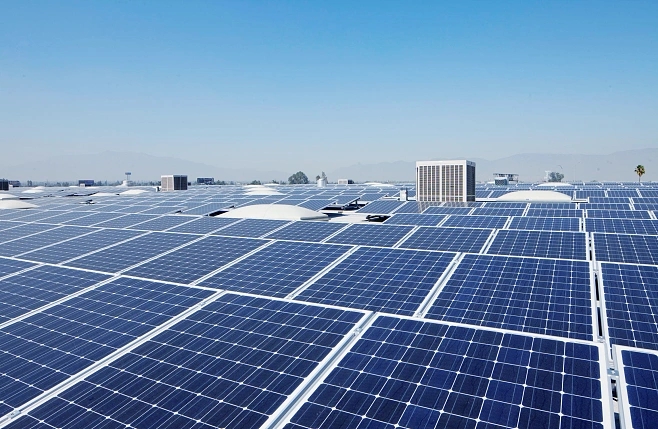Spain will become a model for green energy in Europe. A recent McKinsey report states: “Spain has an abundance of natural resources and highly competitive renewable energy potential, a strategic location and a technologically advanced economy… to become a European leader in sustainable and clean energy.” the report says that Spain should invest in three key areas: electrification, green hydrogen and biofuels.
Compared to the rest of Europe, Spain’s natural conditions give it a uniquely high potential for wind and solar power generation. This, combined with the country’s already strong manufacturing capacity, favorable political environment and “strong network of potential hydrogen buyers”, allows the country to produce clean hydrogen at a much lower cost than most neighboring countries and economic partners. McKinsey reported that the average cost of producing green hydrogen in Spain is 1.4 euros per kilogram compared to 2.1 euros per kilogram in Germany. if(window.innerWidth
This is an incredible economic opportunity, not to mention a critical platform for climate leadership. Spain has earmarked 18 billion euros ($19.5 billion) for investment in the production and distribution of green hydrogen (a generic term for hydrogen obtained from renewable energy sources), “to date it is the most ambitious European attempt to introduce a technology critical to world energy”. the first climate-changing nation,” according to Bloomberg, “a neutral continent.” “Spain has a unique opportunity to become the Saudi Arabia of green hydrogen,” said Carlos Barrasa, vice president of clean energy at local refinery Cepsa SA.
However, critics warn that existing renewable energy capacity is simply not enough to produce green hydrogen in quantities sufficient to replace gas and coal in petrochemicals, steel production and agricultural products. In addition, the question arises whether all this green energy is more useful in other applications. A new report from the International Renewable Energy Agency (IRENA) warns against “indiscriminate use of hydrogen”, urging policymakers to weigh their priorities carefully and consider that widespread use of hydrogen “may be incompatible with the requirements of hydrogen energy.” Decarbonize the world. The report claims that green hydrogen “requires dedicated renewable energy that can be used for other end uses.” In other words, diverting too much green energy into hydrogen production could actually slow down the entire decarbonization movement.
There is another key issue: the rest of Europe may not be ready for such an influx of green hydrogen. Thanks to Spain, there will be supply, but will demand match it? Spain already has many existing gas connections with northern Europe, allowing it to quickly and cheaply export its growing stock of green hydrogen, but are these markets ready? Europe is still arguing about the so-called “Green Deal” of the EU, which means that energy standards and quotas are still up in the air. Elections are coming up in Spain in July that could change the political environment currently supporting the spread of green hydrogen, complicating the political issue.
However, the broader European public and private sector appears to support Spain’s transformation into the continent’s clean hydrogen hub. BP is a major green hydrogen investor in Spain and the Netherlands has just teamed up with Spain to open an ammonia green sea corridor to help transport green hydrogen to the rest of the continent.
However, experts warn that Spain must be careful not to disrupt existing energy supply chains. “There is a logical sequence,” Martin Lambert, head of hydrogen research at the Oxford Institute for Energy Research, told Bloomberg. “The first step is to decarbonize the local electricity system as much as possible, and then use the remaining renewable energy.” created for local use and then exported.” if(window.innerWidth
The good news is that Spain is using green hydrogen in large quantities locally, especially for “deep decarbonization” of “difficult to electrify and difficult to manage industries” such as steel production. The McKinsey Total Zero Scenario “assumes that in Spain alone, excluding any potential wider European market, hydrogen supply will increase more than sevenfold by 2050.” electrification and decarbonization of the continent will take a big step forward.
Post time: Jul-07-2023









